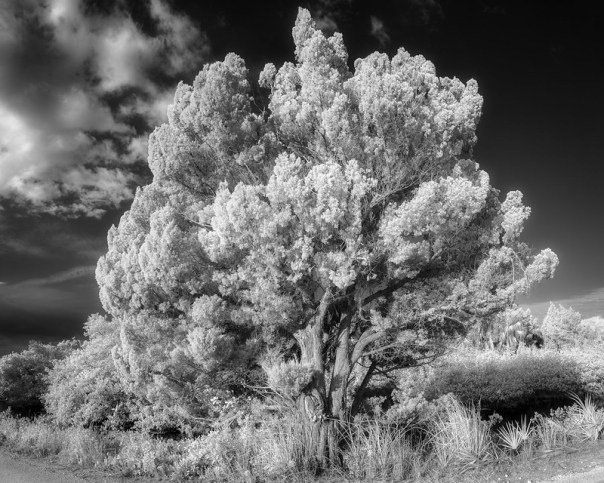When I visit Merritt Island National Wildlife Refuge, I’m never sure what I’ll see. But almost every time there’s something new and interesting.
I hadn’t been to Gator Creek Rd. for sunrise in a while. This spot is at one of the curves where there’s a break in the mangroves so you can get down to water level. There weren’t many clouds. I used a low camera position for this photo to emphasize the foreground and made a 4 image panorama to get a wider field of view.
Next, I drove up to the Bairs Cove Boat ramp. Manatees seem to like the area – I think I’ve seen them there every time I’ve been. Sure enough, I spotted several and debated whether to park and make a photo. I’ve made so many photos of their noses that more of that kind of shot isn’t very exciting . But since I was there, I got out of the car. I counted over a dozen as I walked quietly down to the dock. It wasn’t until I was right at the water that I saw three of them next to the wall. I’d only brought my long lens with me from the car, so after making several “Manatee Head Shots”, I pulled out my phone to get a photo of the group (https://www.flickr.com/photos/edrosack/40566342263/in/dateposted/). When I left they were still there – calmly resting and taking occasional breaths.
I was heading back toward Black Point Wildlife Drive along Shiloh Rd. when I caught a glimpse of some water through a break in the trees. I stopped and walked over to make this infrared image in a spot I’d never noticed before.
Things were fairly busy on Black Point – lots of birds and people too. I stayed at one small feeding frenzy for a while making images of the birds hunting for fish. This heron had just launched from the left.
I stopped next to another photographer who’d found this Killdeer close to the road in very nice light. I was careful not to disturb her bird as I quietly got out of my car to get this image.
I spotted our usual Herons and Egrets, Brown and White Pelicans, a few ducks (mostly Blue Wing Teals, Northern Shovelers, Coots, etc.), Ibis, Willets, Sandpipers, Cormorants, Anhingas, Roseate Spoonbills, Belted Kingfishers, Red-winged Blackbirds, Grackles, Turkey Vultures, Mocking Birds, Ground Doves, Black-necked Stilts, a few Killdeer, and one new life bird for me: a Whimbrel.
Another pleasant and interesting morning at MINWR!
Thanks for stopping by and reading my blog. Now – go make some photos!
©2019, Ed Rosack. All rights reserved
















































